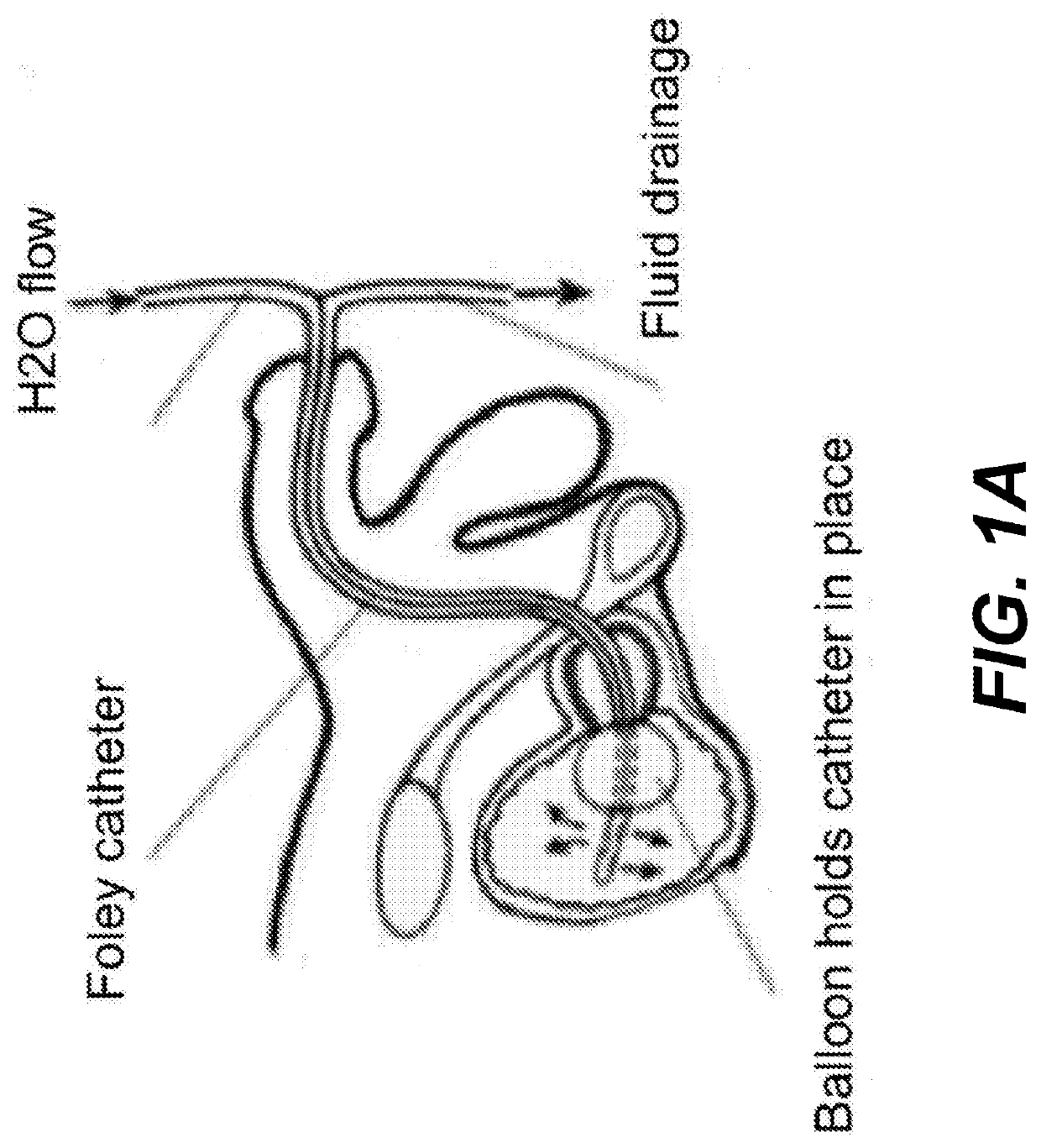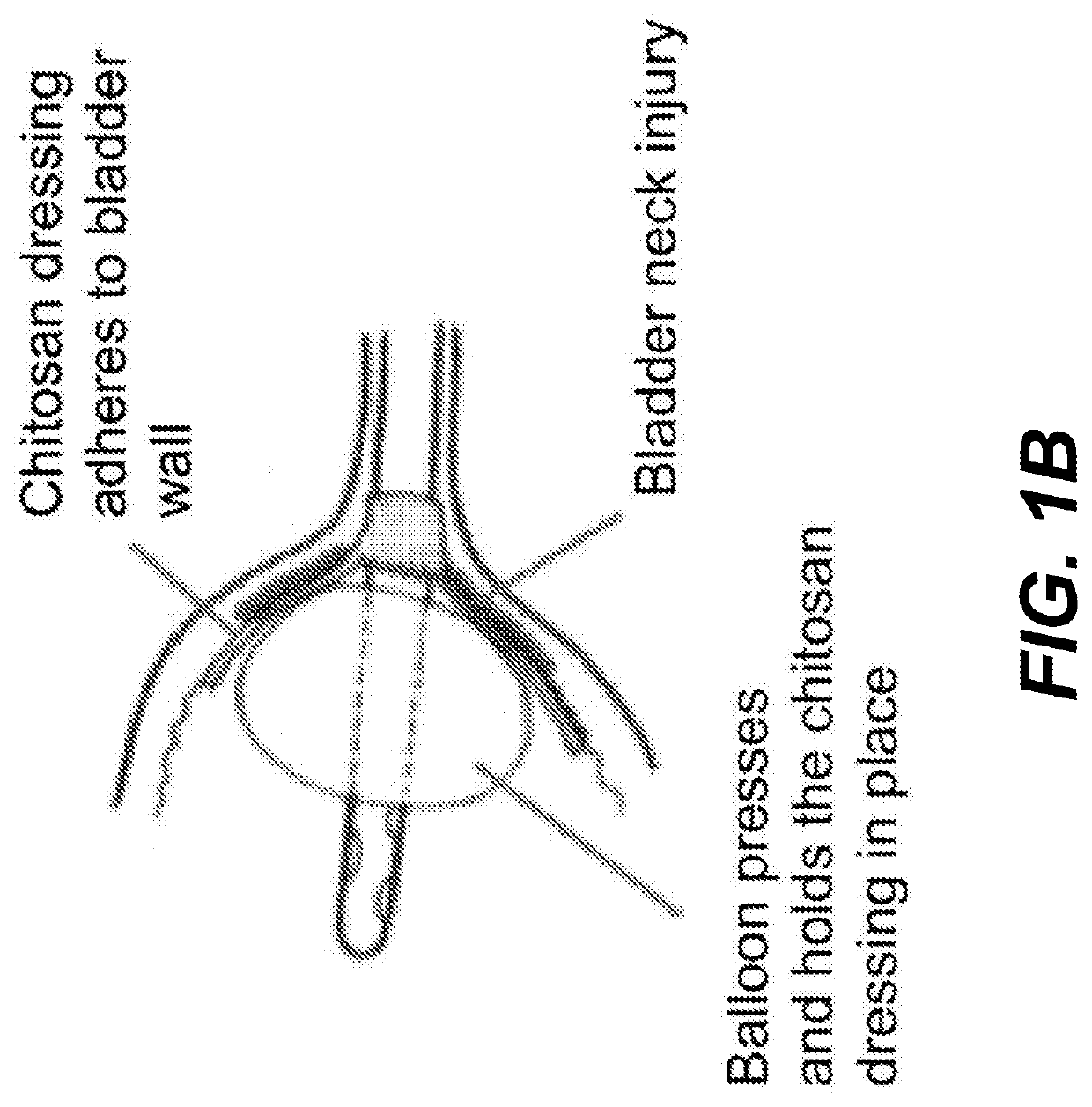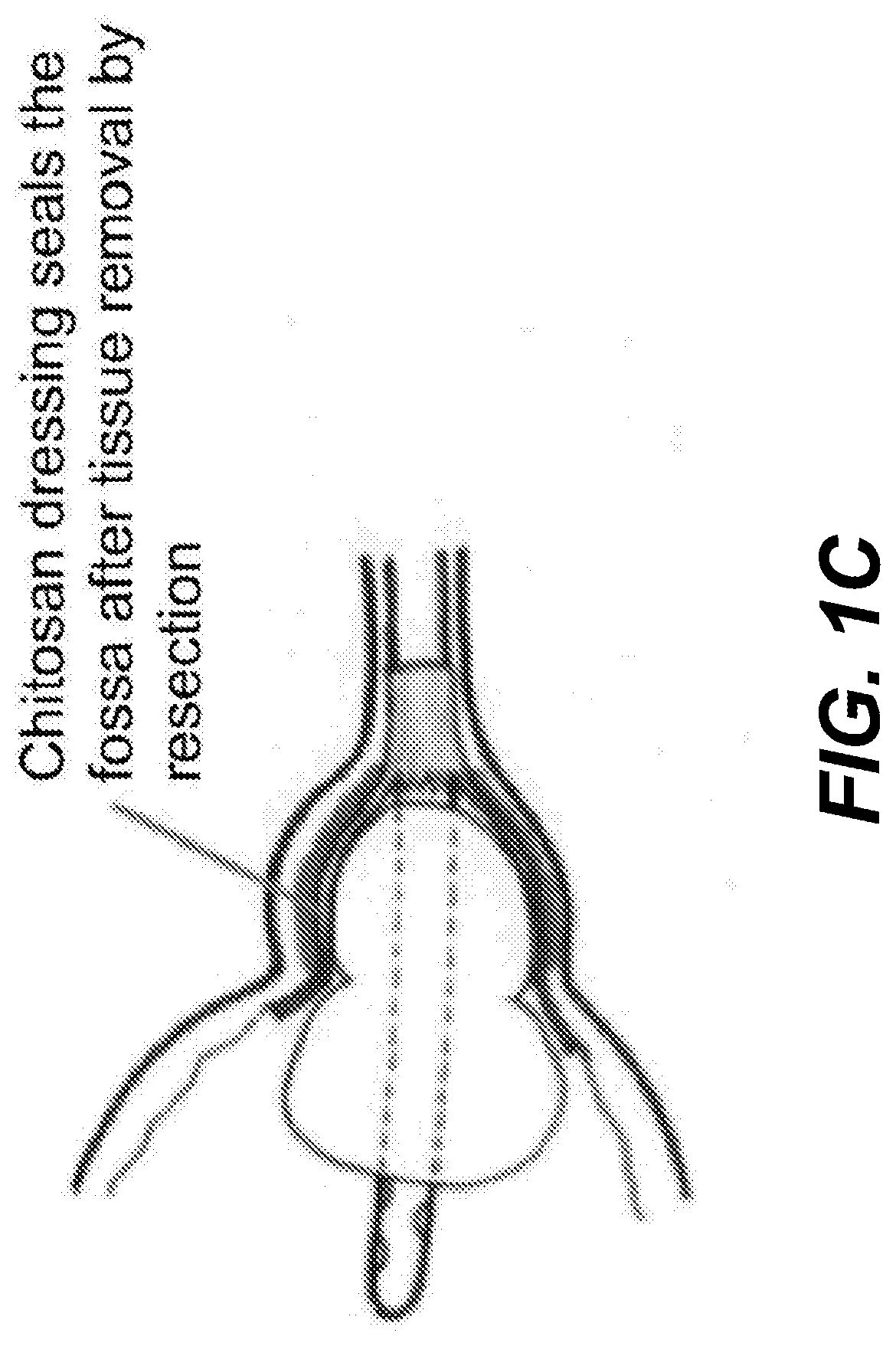Chitosan dressing for control of bleeding in transurethral prostatectomy
a technology of urethral prostatectomy and chitosan, applied in the field of chitosan materials, can solve the problems of untransformed advances, high difficulty in adhesion, continuous oozing bleeding and urine considerations, and relatively low incidence of uncontrolled bleeding from surgical intervention involving prostate and urethra, etc., to achieve uniform endoluminal tissue attachment, rapid bleeding control, and enhanced healing rate
- Summary
- Abstract
- Description
- Claims
- Application Information
AI Technical Summary
Benefits of technology
Problems solved by technology
Method used
Image
Examples
example 1
Preparation of Catechol Chitosan and Characterization
[0133]Catechol chitosan synthesis is an N-acylation reaction between a catechol molecule containing a terminal carboxylic acid and the C-2 amine of glucosamine mer of the chitosan (See FIG. 7). The reaction is performed at controlled pH in dilute aqueous solution at room temperature. FIGS. 14A and 14B 1 provide a number of examples of catechol modified formulations used in the preparation of the invention. Column 1 of FIG. 14B provides a list of dressing preparations. The formulations of the preparations are listed in column 2 of FIG. 14B. Catechol chitosan formulations have an acronym of “Cs-Cat”. The Cs-Cat formulation number is provided immediately after the “Cs-Cat” and is written “Cs-Cat, XX” where XX is a numeric representing the catechol chitosan formulation number. Chitosan solutions were prepared and these are written as “Chitosan” or “Cs” typically with the acid (lactic or acetic) used to provide aqueous solution. HPMC i...
example 2
Freeze Phase Separated Hydrophilic Polymer Dressings
[0148]Hydrophilic polymer aqueous solutions were prepared inside 500 ml, 1000 ml or 2000 ml Nalgene LDPE bottles or polypropylene beakers by addition of components including but not limited to pre-prepared solution, hydrophilic polymer, water, acid, and additional components. FIG. 14B lists 85 of the formulation types that were investigated.
[0149]The main problems experienced when formulating for the transuretheral prostatectomy application with dressings in direct contact with urine were: 1) rapid (generally <30 mins) urine promoted dissolution of chitosan; 2) interference from blood in achieving rapid adherence with the pure catechol modified chitosans; 3) susceptibility to dressing cracking and tearing when making changes to formulations to address problems with dissolution and adherence. The final hydrophilic polymer solution % w / w was between 0.1% to 4% by weight polymer. Capped bottles and their contents were mixed continuous...
example 3
In Vitro and Ex-Vivo Testing of Chitosan Endoluminal Hemostatic Dressing Prototypes
[0153]The dissolution behavior of the CEHD was investigated under conditions similar to those that would be experienced during TURP in vivo use. Dissolution was monitored for periods up to 7 days to establish that the CEHD dissolution met targeted resistance to early dissolution (in the first 24 hours) with subsequent later dissolution so that no residual CEHD would be present after 168 hours (7 days).
[0154]Sectioned pieces (25 mm×25 mm×3 mm) of porcine bladder tissue with mucosal surface facing outwards were fixed with cyanoacrylate cement to the bottom of a 200-milliliter polystyrene beaker. One drop of solution of 1:250 v / v blood in standard saline was onto the top surface of the ex-vivo sectioned bladder tissue. A CEHD dressing piece (1.3 cm×1.9 cm) was applied with 9.7 kPa (73 mmHg) pressure to the wetted tissue surface by application of a 500-gram standard weight (Troemner, T...
PUM
| Property | Measurement | Unit |
|---|---|---|
| Temperature | aaaaa | aaaaa |
| Temperature | aaaaa | aaaaa |
| Temperature | aaaaa | aaaaa |
Abstract
Description
Claims
Application Information
 Login to View More
Login to View More - R&D
- Intellectual Property
- Life Sciences
- Materials
- Tech Scout
- Unparalleled Data Quality
- Higher Quality Content
- 60% Fewer Hallucinations
Browse by: Latest US Patents, China's latest patents, Technical Efficacy Thesaurus, Application Domain, Technology Topic, Popular Technical Reports.
© 2025 PatSnap. All rights reserved.Legal|Privacy policy|Modern Slavery Act Transparency Statement|Sitemap|About US| Contact US: help@patsnap.com



